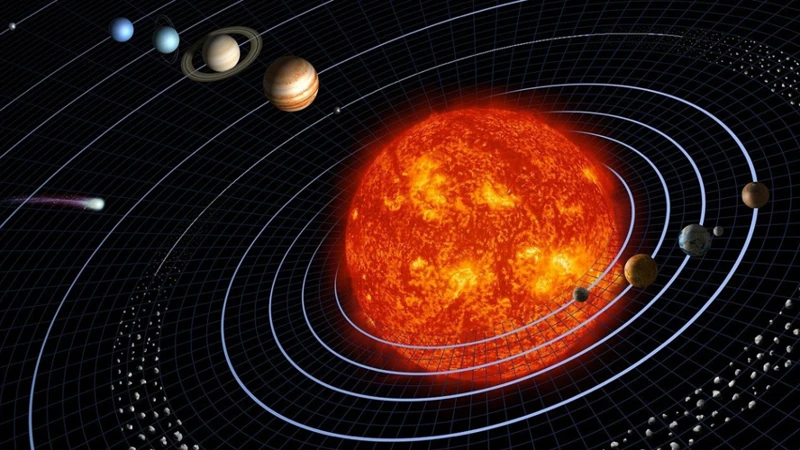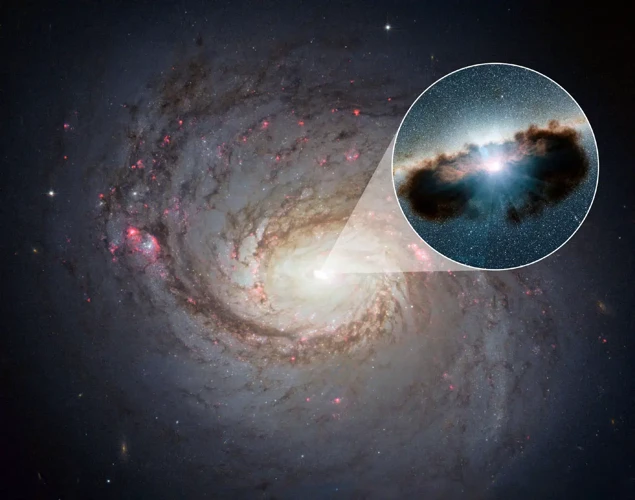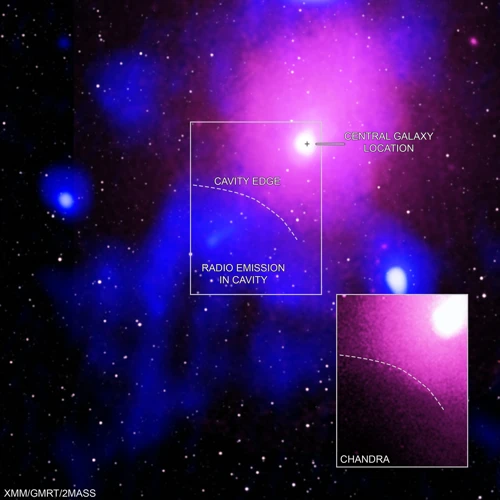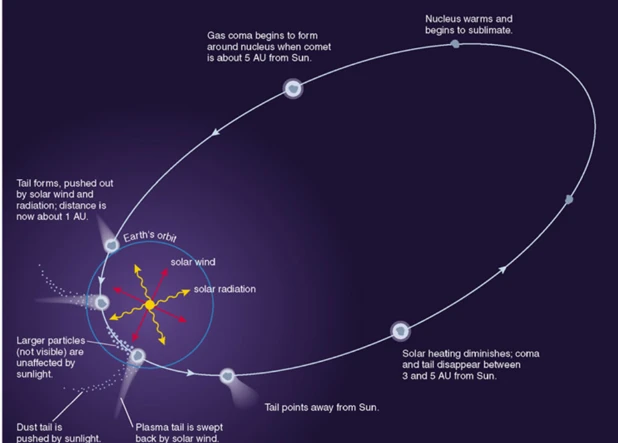The formation of the solar system is a topic that has fascinated scientists for centuries. From the curious birth of our sun and its surrounding planets to the critical role of comets in shaping the early stages of our cosmic neighborhood, there is much to explore and discover about our celestial origins. In this article, we will delve into the intricate details of the nebular hypothesis, the composition of early celestial bodies, and the formation of the protoplanetary disk. We will then journey through the world of comets, understanding their definition, composition, and different types. Moreover, we will unravel the significant role played by comets in the formation of our solar system and their potential impact on planets, including the delivery of water and organic matter. Ultimately, we will examine the intriguing possibility that comets may have had a hand in seeding life on Earth and other planets. Join us on this cosmic adventure as we explore the awe-inspiring wonders of comets and their role in shaping our solar system.
Contents
- The Birth of the Solar System
- Comets: The Cosmic Messengers
- Cometary Impact on Planets
- Comets and Life Potential
- Observing and Studying Comets
- Conclusion
-
Frequently Asked Questions
- 1. What is the Nebular Hypothesis?
- 2. What was the early composition of celestial bodies in the solar system?
- 3. What are comets made of?
- 4. What are the different types of comets?
- 5. How do comets contribute to the formation of the solar system?
- 6. How do comets impact planets?
- 7. Can comets deliver water to Earth?
- 8. Do comets have any potential for seeding life?
- 9. How do we study and observe comets?
- 10. What is the role of telescopes in studying comets?
- References
-
Frequently Asked Questions
- 1. How do comets form?
- 2. Why are comets called “cosmic messengers”?
- 3. What are the different types of comets?
- 4. How do comets contribute to the formation of the solar system?
- 5. What geological effects do cometary impacts have?
- 6. How do comets influence the atmospheric composition of planets?
- 7. Did comets contribute to the presence of water on Earth?
- 8. How do comets supply building blocks of life?
- 9. Is there a potential for comets to seed life on other planets?
- 10. How are comets observed and studied?
- References
- Read More
The Birth of the Solar System

The birth of the solar system is a captivating tale that begins with the nebular hypothesis, a widely accepted theory supported by scientific evidence. According to this hypothesis, about 4.6 billion years ago, a giant molecular cloud collapsed, resulting in the formation of a spinning disk known as the protoplanetary disk. This disk contained a mixture of gas, dust, and ice, which eventually coalesced to form the sun at its center. Planets and other celestial bodies gradually emerged from the material in the disk through a process called accretion. The early composition of these celestial objects consisted mainly of hydrogen and helium, along with traces of heavier elements such as carbon, oxygen, and iron. As these objects grew in size, their gravitational pull increased, attracting more matter and further shaping the structure of the solar system. The birth of the solar system is a fascinating event that sets the stage for the remarkable cosmic journey we are about to embark on.
1. Nebular Hypothesis
The Nebular Hypothesis is a widely accepted theory that explains the formation of the solar system. According to this hypothesis, about 4.6 billion years ago, a giant molecular cloud collapsed due to gravitational forces, initiating the birth of the sun and its surrounding planets. The collapsing cloud formed a spinning disk known as the protoplanetary disk. This disk was composed of gas, dust, and ice, which provided the building blocks for the formation of celestial bodies.
The protoplanetary disk played a crucial role in the formation of the solar system. As the disk spun, the material within it began to clump and collide due to gravitational forces. The collisions and accretion of these particles gradually led to the formation of planetesimals, which are small bodies ranging in size from a few kilometers to tens of kilometers.
Through continued accretion and collisions, the planetesimals grew larger and eventually formed protoplanets. Over time, the protoplanets continued to accrete matter, ultimately becoming the planets we know today. The inner region of the protoplanetary disk, closer to the sun, primarily consisted of rocky and metallic materials, leading to the formation of terrestrial planets such as Earth and Mars. On the other hand, the outer region of the disk, which was colder, allowed volatile compounds like water, methane, and ammonia to condense. This led to the formation of gas giants like Jupiter and Saturn.
The Nebular Hypothesis provides a comprehensive explanation for the formation of the solar system, highlighting the role of the protoplanetary disk and the gradual accretion of matter. This hypothesis is supported by various pieces of evidence, including the observed composition and orbits of the planets, as well as the abundance of similar protoplanetary disks in other star-forming regions of the universe. Understanding the Nebular Hypothesis allows us to unravel the fascinating story behind the birth of our solar system and the celestial wonders it contains.
2. Early Composition
The early composition of celestial bodies in the solar system was a crucial factor in shaping the formation and evolution of our cosmic neighborhood. During the early stages of the solar system’s development, the predominant elements were hydrogen and helium. These lighter elements were abundant in the protoplanetary disk and made up a significant portion of the gas that eventually formed the sun. Alongside hydrogen and helium, heavier elements such as carbon, oxygen, and iron were also present. These elements were formed through nuclear reactions in the cores of massive stars that existed prior to the birth of the sun.
The presence of carbon, oxygen, and iron in the early composition of celestial bodies played a significant role in the subsequent formation of planets, including Earth. Carbon is the basic building block of life, and its presence in the early solar system provided the necessary foundation for the development of organic molecules and the potential for life to emerge. Oxygen, on the other hand, is essential for supporting life as we know it and is a crucial component of water, which plays a vital role in biological processes. Iron, being a dense and abundant element, contributed to the formation of the Earth’s core and its magnetic field, which acts as a shield against harmful solar radiation.
The early composition of the solar system not only provided the raw materials for planet formation but also influenced the overall structure and characteristics of each celestial body. The precise abundance and distribution of elements in the protoplanetary disk impacted the size, density, and chemistry of the planets that eventually formed. This early composition set the stage for the complex interactions and processes that would shape the development of the solar system throughout its history.
Understanding the early composition of our solar system enables us to comprehend the intricate mechanisms that led to the formation of planets and the potential for life to arise. It allows us to appreciate the interconnectedness of celestial bodies and the specific conditions that made our planet Earth a haven for life as we know it. Exploring the early composition of the solar system invites us to ponder the mysteries of our cosmic origins and the incredible journey that has brought us to the present day.
3. Formation of Protoplanetary Disk
The formation of the protoplanetary disk is a pivotal stage in the birth of the solar system. It begins with the collapse of a giant molecular cloud, a vast region of interstellar gas and dust. As gravity pulls these particles together, the cloud collapses and starts to spin, forming a spinning disk of material. This protoplanetary disk is a key component in the formation of planets and other celestial bodies.
The disk consists of a mixture of gas, dust, and ice. Gravity causes the material in the disk to clump together, gradually forming planetesimals. These are small, solid objects that range in size from a few meters to several kilometers. Planetesimals act as building blocks for planets, eventually growing through collisions and accretion. Over time, larger bodies called planetary embryos or protoplanets begin to form as the planetesimals continue to merge and accumulate mass.
During the formation of the protoplanetary disk, a process known as differentiation occurs. This involves the separation of materials within the disk based on their composition and density. Heavier materials such as metals sink to the center, while lighter materials like gases and ices remain closer to the outer regions of the disk. This differentiation is crucial in determining the composition and structure of the planets that will eventually form.
The formation of the protoplanetary disk is an intricate and dynamic process that sets the stage for the development of our solar system. Understanding this process provides valuable insights into the origins of celestial bodies and the diverse planetary systems that exist in the universe. Exploring the fascinating mysteries surrounding the formation of the protoplanetary disk brings us closer to uncovering the secrets of the cosmos.
Comets: The Cosmic Messengers

Comets, often referred to as cosmic messengers, are captivating celestial objects that have captivated human curiosity for centuries. These enigmatic objects are composed of a mixture of ice, dust, rock, and organic compounds, making them essential pieces of the celestial puzzle. Comets originate from various regions of the solar system, such as the Kuiper Belt and the Oort Cloud. Types of comets include short-period comets, which have orbits that take them closer to the Sun, and long-period comets, which have more elliptical and extended orbits. Through their mesmerizing tails, comets provide a visual spectacle, especially when they approach the Sun and the heat causes the icy nucleus to release volatile gases and particles, forming a glowing coma and bright tail that can stretch across the night sky. Comets play a crucial role in the formation of the solar system, acting as reservoirs of ancient materials that may have contributed to the building blocks of life on Earth and other planets. Their impact on the early Earth is believed to have delivered water and organic molecules, which are essential for the potential emergence of life. The study of comets has also been instrumental in shaping our understanding of the origins of the universe, providing insights into the chemical composition and history of our cosmic neighborhood. So join us as we delve into the captivating world of comets, uncovering their mysteries and exploring their significance in unraveling the secrets of our vast universe.
1. Definition and Composition
Comets are cosmic messengers that have captivated astronomers and scientists for centuries. In order to understand their significance in the formation of the solar system, it is important to first define what comets are and examine their composition. Comets are celestial bodies primarily composed of three main components: a nucleus, a coma, and a tail. The nucleus is the solid core of the comet, consisting of a mixture of ice, rock, dust, and organic compounds. It is often several kilometers in diameter and considered the heart of the comet. As a comet approaches the sun, the heat causes the ice in the nucleus to vaporize, creating a glowing coma around the nucleus. This coma is made up of gas and dust that are released from the nucleus, forming a cloud-like structure that can extend for thousands of kilometers. Lastly, the tail of a comet is a prominent feature that stretches away from the sun. It is composed of ionized gases and dust particles that are pushed away from the nucleus by solar radiation and the solar wind. The tail can extend millions of kilometers and always points away from the sun due to the pressure exerted by the solar particles. The composition of comets provides invaluable insights into the early stages of our solar system. By studying the composition of comets, scientists can gain knowledge about the materials present during the formation of the solar system and the conditions that prevailed at that time. The composition of comets includes various volatile compounds, such as water ice, carbon dioxide, methane, and ammonia. These compounds are believed to be remnants from the early stages of the solar system and may have played a crucial role in the delivery of water and organic matter to Earth and other celestial bodies. By analyzing the composition of comets, scientists can unravel the mysteries of our cosmic origins and gain a deeper understanding of the formation and evolution of the solar system.
2. Types of Comets
Comets are fascinating celestial objects that come in different types, each with its unique characteristics. Periodic comets are those that have predictable orbits and regularly return to the inner solar system. They originate from two main regions—the Kuiper Belt, a region beyond Neptune, and the Oort Cloud, a sphere of icy objects surrounding the solar system. Some well-known periodic comets include Halley’s Comet and Comet Hale-Bopp. Non-periodic comets, on the other hand, have irregular orbits and are often referred to as “new comets” since they are discovered when they enter the inner solar system for the first time. These comets can come from the same regions as periodic comets but are influenced by gravitational interactions with other celestial bodies, altering their paths. Encke-type comets are a subgroup of periodic comets that have the shortest orbital periods, generally less than 200 years. They tend to have smaller nuclei compared to other types of comets. Kreutz sungrazers are another subgroup of periodic comets that pass extremely close to the Sun, sometimes even disintegrating due to the intense heat and gravitational forces. You can learn more about the fascinating legends and mythology surrounding comets in various cultures, such as the legends of Shiva, the Yoruba mythology, or the origins and meanings of the Orion constellation. Understanding the different types of comets allows us to appreciate the diverse nature of these cosmic messengers and their invaluable role in the formation of the solar system.
3. Role in the Formation of Solar System
Comets play a pivotal role in the formation of the solar system. These celestial wanderers are remnants from the early days of our cosmic neighborhood, preserving valuable information about the conditions and processes that led to the formation of planets and other celestial bodies. As the protoplanetary disk evolved, small particles of dust and ice began to clump together, forming aggregates that further grew in size. These aggregates, known as planetesimals, continued to collide and merge, eventually giving rise to the planets we know today. Comets, with their icy composition, were instrumental in delivering volatile elements, such as water and carbon compounds, to the developing planets. Their impact on the growing bodies of the solar system enriched their composition, shaping their physical and chemical characteristics. Additionally, comets brought an abundance of organic matter, including amino acids, which are the building blocks of life. Hence, comets not only contributed to the material makeup of the solar system but also provided essential ingredients for the potential emergence of life on Earth and other planets. Through their unique composition and role as cosmic messengers, comets have left an indelible mark on the formation and evolution of the solar system, paving the way for the incredible diversity and complexity we observe today.
4. Delivery of Volatiles and Organic Matter
Comets have played a vital role in the delivery of volatiles and organic matter to the early solar system. These icy bodies contain a plethora of volatile compounds such as water, ammonia, carbon dioxide, and methane. When comets approach the inner regions of the solar system, the heat from the sun causes these volatile substances to sublime, creating a glowing coma and a tail that is visible from Earth. As comets travel through space, they leave behind a trail of dust and gas, which can eventually intersect with the paths of planets. This interaction leads to the deposition of volatiles onto the planetary surfaces. The delivery of water, in particular, is of immense significance. Water is a fundamental ingredient for the development and sustenance of life as we know it. Comets are believed to have supplied a substantial amount of water to Earth and other planets during the early stages of the solar system’s formation. Comets also carry organic matter, including complex carbon-based molecules. These molecules are the building blocks for life and may have contributed to the emergence of life on Earth. The delivery of volatiles and organic matter by comets has not only influenced the chemical composition of planets but also holds the potential for kickstarting the existence of life in the solar system. Studying comets and their composition provide valuable insights into the origins of life and the formation of planets, allowing us to unravel the mysteries of our cosmic neighborhood.
Cometary Impact on Planets

Comets, those mystical cosmic wanderers, have had a profound impact on the planets of our solar system throughout history. Their collisions with planets have led to the formation of craters and left lasting geological effects. These impact events can reshape the surface of a planet and even contribute to the creation of new landforms. But their influence does not stop there. Cometary impacts also influence the atmospheric composition of planets. When a comet crashes into a planet, it releases gases and dust into the atmosphere, altering its composition and potentially affecting weather patterns and climate. One of the most significant contributions of cometary impact is the delivery of water to terrestrial planets. Comets, being composed of ice and frozen gases, can bring substantial amounts of water to arid planets, contributing to the formation of oceans and the potential for the development of life. The impact of comets on planets is far-reaching and has shaped our solar system in profound ways.
1. Crater Formation and Geological Effects
Crater formation is a fascinating result of cometary impacts on planets and moons within our solar system. When a comet collides with a celestial body, it releases an immense amount of energy upon impact. This energy creates a shockwave that propagates through the surrounding surface, causing the formation of a crater. The size and depth of the crater depend on various factors including the mass, velocity, and angle of the impacting comet, as well as the composition and structure of the target surface. Craters can range in size from small, shallow indentations to massive, deep depressions. Some craters even have central peaks or rings, which are formed due to the rebounding of material after impact. The geological effects of these craters are significant. The impact can melt the target surface and eject molten rock, which may solidify and create distinctive layers within the crater. The shockwave and subsequent seismic activity can trigger volcanic activity, resulting in the formation of volcanic vents and lava flows. The heat generated by the impact can also lead to the alteration of surrounding minerals and the release of valuable elements. Cometary impacts have a profound influence on the geological evolution of celestial bodies, shaping their landscapes, altering their compositions, and providing valuable insights into the history of our solar system.
2. Influence on Atmospheric Composition
The influence of comets on atmospheric composition is a fascinating area of study in understanding the role of these celestial wanderers in the formation and evolution of our solar system. Cometary impacts can have a profound impact on the atmospheric compositions of planets. When a comet collides with a planet, the impact releases a tremendous amount of energy. The heat generated by the collision can cause the vaporization of both the comet’s material and the planet’s surface material. This vaporization process results in the injection of volatile compounds into the planet’s atmosphere. Various chemical reactions occur as a result, leading to the formation of new molecules and altering the atmospheric composition. For example, cometary impacts may introduce gases such as water vapor, carbon dioxide, methane, and ammonia into the atmosphere, influencing the planet’s greenhouse effect and temperature regulation. Additionally, the impact can release dust particles, altering the atmospheric opacity and scattering of sunlight. These atmospheric changes have long-lasting effects on climate and weather patterns on a planetary scale. Studying the influence of comets on atmospheric composition provides valuable insights into the past and present conditions of planets within our solar system and beyond.
3. Water Delivery to Terrestrial Planets
When it comes to the role of comets in the formation of the solar system, one intriguing aspect is their contribution to the delivery of water to terrestrial planets. Comets are composed primarily of ice, including frozen water, as well as various volatile compounds. During the early stages of the solar system’s formation, comets played a crucial role in transporting water to the inner planets, namely Earth, Mars, Venus, and Mercury. It is believed that the icy bodies originating from the outer regions of the solar system, such as the Kuiper Belt and the Oort Cloud, collided with these terrestrial planets, releasing water upon impact. This collision not only delivered substantial amounts of water but also influenced the geological features and compositions of these planets. Water is a fundamental ingredient for the development and sustainability of life as we know it, and the delivery of water by comets has significantly contributed to the habitability of our planet and potentially others in the solar system. The precise amount of water delivered by comets throughout history is difficult to quantify, but its impact on the development and evolution of terrestrial planets cannot be understated. The study of comets and their role in water delivery continues to enhance our understanding of the fascinating processes that shaped our cosmic neighborhood.
Comets and Life Potential

Comets have long been regarded as potential bearers of life’s building blocks and have sparked considerable interest among scientists in exploring their role in the development of life. One of the key ways comets contribute to the potential for life is through water delivery. Comets are rich in volatile substances, including water ice, which they bring from the outer regions of the solar system. When comets collide with planets, such as Earth, the heat generated during impact releases these volatiles, including water, into the atmosphere. This process provides a significant source of water to terrestrial planets, which is crucial for the emergence and sustainability of life. Comets contain organic molecules, including amino acids, which are the building blocks of proteins and are essential for life as we know it. These organic compounds may have played a vital role in seeding the early Earth with the necessary ingredients for life’s emergence. While the direct evidence of life on comets remains elusive, the potential linkage between comets and the development of life continues to captivate scientists and spur ongoing research into the origins of life in the universe.
1. Role in Water Delivery
Comets play a crucial role in the delivery of water to celestial bodies within the solar system. These icy wanderers contain a significant amount of water in the form of ice, which makes up a substantial portion of their composition. When comets approach the Sun, the heat causes the ice to vaporize and form a glowing coma around the nucleus. This process, known as sublimation, creates a tail that points away from the Sun due to the solar wind. As comets travel through the solar system, their tails leave a trail of water vapor and ice particles behind. When these particles encounter planets, they can collide and deposit water on their surfaces. This phenomenon has been observed on Earth, where it is believed that comet impacts contributed to a significant portion of the planet’s water content. On Mars, recent scientific studies have suggested that comets may have played a similar role in the past, supplying water to the planet’s surface. Additionally, the presence of deuterium, a heavier form of hydrogen found in cometary water, can be used to distinguish between different sources of water on celestial bodies. This highlights the invaluable role of comets in delivering water molecules, which are vital for the formation and sustenance of life as we know it.
2. Supplying Building Blocks of Life
Comets, those enigmatic cosmic wanderers, have been found to play a crucial role in the formation and supply of the building blocks of life. These icy bodies, composed of water, frozen gases, complex organic molecules, and dust particles, act as a reservoir of valuable materials. When comets journey close to the sun, the heat causes the icy exterior to vaporize, releasing a cloud of gas and dust called a coma. As the coma interacts with solar radiation, complex organic molecules are formed through various chemical reactions. In fact, scientists have detected amino acids, the fundamental building blocks of proteins, within the comas of comets. These organic molecules, along with other compounds such as nucleobases and sugars, are crucial for the chemical processes necessary for life as we know it. As comets travel through the solar system, they can collide with planets, delivering these precious organic compounds to their surfaces. This process is believed to have played a vital role in the presence of organic molecules on early Earth and potentially other planets. Scientific missions such as the Rosetta mission have provided direct evidence of the presence of complex organic compounds on comets, further supporting their role as suppliers of the building blocks of life in our solar system. The discovery of such organic molecules on comets sparks excitement and raises intriguing questions about the potential for life beyond Earth, making comets fascinating subjects of study for astrobiologists and exobiologists alike.
3. Potential for Seeding Life
The potential for comets to seed life on other planets is a topic that has sparked scientific curiosity and exploration. Comets are believed to contain a rich array of organic compounds, such as amino acids, which are the building blocks of life. When a comet enters the atmosphere of a planet, the intense heat causes the volatile substances to vaporize, forming a glowing coma and a tail that stretches out into space. As the comet travels through space, it may carry these organic molecules and release them upon impact with a planet’s surface. This delivery of organic matter could provide the essential ingredients needed for the emergence of life. Additionally, cometary impacts could also bring water, another crucial element for life, to planets that may have been deficient in it. While the chances of comets directly seeding life on other planets remain uncertain, their role in delivering the necessary components cannot be overlooked. The study of comets and their potential for seeding life opens up a universe of possibilities in our quest to understand the origins and existence of life beyond our own planet.
Observing and Studying Comets

Observing and studying comets is an exciting endeavor that enables scientists to unravel the mysteries of these celestial bodies. Through a combination of space missions and probes, ground-based observations, spectroscopy, and analysis, as well as the invaluable role of telescopes, researchers gain valuable insights into the composition, behavior, and origins of comets. Space missions like the Rosetta mission have provided up-close observations of comets, studying their structure, surface composition, and even landing a probe on a comet’s surface. Ground-based observations utilize powerful telescopes to track comets, measure their brightness, and capture detailed images. Spectroscopy plays a crucial role in studying the emissions from comets, revealing the presence of different elements and compounds. These observations and data analysis contribute to a deeper understanding of comets and their role in the formation of the solar system. The fascinating world of cometary study continues to expand our knowledge of the universe and unlock new revelations about the cosmos we inhabit.
1. Space Missions and Probes
1. Space Missions and Probes:
The exploration of comets and their role in the formation of the solar system would not have been possible without the remarkable advancements in space missions and probes. These groundbreaking endeavors have allowed scientists to gather valuable data and images from close encounters with comets. Here are some notable space missions and probes that have contributed to our understanding of comets:
– Rosetta: The European Space Agency’s Rosetta mission made history by being the first mission to orbit a comet and successfully deploy a lander, Philae, onto its surface. The mission’s objective was to study Comet 67P/Churyumov-Gerasimenko and gather crucial data about its composition and properties.
– Stardust: NASA’s Stardust mission aimed to capture particles of a comet’s coma, the envelope of gas and dust surrounding the nucleus, and return them to Earth for analysis. This mission provided scientists with valuable insights into the organic compounds found in comets.
– Deep Impact: This NASA mission involved a high-speed impactor colliding with Comet Tempel 1, allowing scientists to study the resulting debris and gain insights into the composition of comets. It also provided valuable data on the structure of a comet’s nucleus.
– Giotto: Launched by the European Space Agency, the Giotto mission was the first to encounter a comet, specifically Comet Halley. It flew within 600 kilometers of the nucleus and captured detailed images and data, revolutionizing our understanding of comets.
The data and images obtained from these space missions and probes have significantly advanced our knowledge of comets and their role in the formation of the solar system. They have provided valuable insights into the composition, structure, and behavior of comets, shedding light on their significance in the cosmic scheme.
2. Ground-based Observations
Ground-based observations play a crucial role in the study of comets and their behavior. Scientists rely on a variety of telescopes and instruments to gather valuable data from observatories around the world. One of the prominent techniques used in ground-based observations is spectroscopy, which involves analyzing the light emitted or absorbed by comets. Spectroscopic observations provide valuable information about the composition and structure of comets, helping scientists understand their origin and evolution. Moreover, ground-based observations allow for continuous monitoring of comets over extended periods, enabling scientists to track their trajectories, study their activity levels, and identify any changes in their behavior. The use of adaptive optics technology allows for improved imaging of comets, providing detailed views and revealing important features such as jets and outbursts. Ground-based observations also contribute to collaborative efforts with space missions, giving scientists a broader picture of comets and the solar system. While space missions offer up-close encounters, ground-based observations provide a complementary perspective, allowing for a comprehensive understanding of comets and their role in the formation of the solar system.
3. Spectroscopy and Analysis
Spectroscopy and analysis are vital tools in understanding comets and their composition. Through the use of spectroscopy, scientists can study the light emitted or absorbed by comets, providing valuable information about their chemical makeup. By analyzing the light spectrum, scientists can identify the presence of specific elements and compounds within the comet’s nucleus, coma, and tail. Additionally, spectroscopy allows for the detection of organic molecules that are essential building blocks of life. This technique has revealed the presence of complex organic molecules in comets, including amino acids, which are the building blocks of proteins. Analysis of cometary samples taken during space missions, such as the Stardust mission, has provided valuable insights into the nature of comets and their role in the formation of the solar system. These samples are meticulously examined in laboratories to determine their chemical composition and the isotopic ratios of various elements. Cometary analysis allows scientists to assess the level of volatiles, such as water, carbon dioxide, and methane, which have important implications for planetary formation and the potential for habitability. Spectroscopy and analysis continue to play a crucial role in deepening our understanding of comets and their significance in unraveling the mysteries of our solar system.
4. The Role of Telescopes
Telescopes play a crucial role in observing and studying comets in our solar system. These powerful instruments enable astronomers to capture detailed images and gather valuable data about comets’ composition, structure, and behavior. By using different types of telescopes, astronomers can explore comets across a broad range of wavelengths, from visible light to radio waves and beyond. Additionally, telescopes equipped with spectrometers allow for the analysis of the light emitted or reflected by comets. This analysis helps scientists identify the chemical composition of comets and provides insights into the volatiles and organic compounds present within them. Advanced telescopes like the Hubble Space Telescope and the upcoming James Webb Space Telescope offer unprecedented resolution and sensitivity to observe distant comets and capture high-resolution images. The data collected from these telescopes contributes significantly to our understanding of cometary activity, including outgassing and the formation of cometary tails. Telescopes are invaluable tools that continue to expand our knowledge of comets and their role in the formation of the solar system, pushing the boundaries of astronomical research to new frontiers.
Conclusion

In conclusion, the role of comets in the formation of the solar system is undeniable. These cosmic messengers played a crucial part in delivering volatiles and organic matter to our young planets, seeding the potential for life to arise. The impacts of comets on planets shaped their geological features and influenced their atmospheric compositions. Moreover, the delivery of water by comets to terrestrial planets was instrumental in creating the conditions necessary for life as we know it. Through space missions, ground-based observations, and spectroscopy analysis, scientists have been able to study and unravel the mysteries of comets. The data collected from these studies have provided valuable insights into the composition, origins, and behavior of comets, contributing to our understanding of the early stages of our solar system’s formation. The role of telescopes and space probes continues to be crucial in advancing our knowledge of comets and their significance in the larger context of the universe. As we continue to explore and study these celestial objects, we can’t help but be amazed by the vital role they have played in shaping our cosmic neighborhood and the potential they hold for understanding the origins of life. The study of comets is an ongoing journey, filled with endless possibilities and discoveries yet to be made.
Frequently Asked Questions

1. What is the Nebular Hypothesis?
The Nebular Hypothesis is a theory that suggests the formation of the solar system from a giant molecular cloud collapsing. This collapse resulted in the creation of a spinning disk called the protoplanetary disk, from which the planets and other celestial bodies were formed through the process of accretion.
2. What was the early composition of celestial bodies in the solar system?
In the early stages of the solar system, celestial bodies were primarily composed of hydrogen and helium, along with small amounts of heavier elements like carbon, oxygen, and iron. These elements played a crucial role in the formation and evolution of the planets.
3. What are comets made of?
Comets are composed of a mixture of dust, ice, rocky material, and organic compounds. The icy component consists mainly of water ice, but it also contains frozen gases such as carbon dioxide, methane, and ammonia.
4. What are the different types of comets?
Comets are categorized into two main types: short-period comets and long-period comets. Short-period comets have orbits that take them around the Sun in less than 200 years, while long-period comets have orbits that take them much longer.
5. How do comets contribute to the formation of the solar system?
Comets played a significant role in the formation of the solar system by delivering volatiles and organic matter to the developing planets. They brought essential elements for the composition of celestial bodies and contributed to the overall diversity of the solar system.
6. How do comets impact planets?
When a comet collides with a planet, it can create impact craters and cause significant geological effects. These impacts can also influence the planet’s atmospheric composition and contribute to the delivery of water to terrestrial planets.
7. Can comets deliver water to Earth?
Yes, comets can deliver water to Earth. While Earth has its own water, evidence suggests that comets played a role in delivering significant amounts of water during the early stages of the planet’s formation.
8. Do comets have any potential for seeding life?
Comets have the potential to supply the building blocks of life. They contain organic compounds that could have played a role in the origin of life on Earth. Some scientists hypothesize that comets may have even seeded life on other planets as well.
9. How do we study and observe comets?
Comets are studied through space missions and probes, as well as ground-based observations. Spectroscopy and analysis of their composition provide valuable insights into the nature and origins of these cosmic messengers.
10. What is the role of telescopes in studying comets?
Telescopes play a vital role in the observation and study of comets. They allow us to track comets’ movements, record their appearances and behaviors, and provide detailed images and data that help deepen our understanding of these intriguing celestial bodies.
References
Frequently Asked Questions

1. How do comets form?
Comets form from a mixture of ice, rock, and organic compounds. They are believed to originate from the outer regions of the solar system, where the temperature is low enough for volatile substances to freeze.
2. Why are comets called “cosmic messengers”?
Comets are called cosmic messengers because they contain pristine material from the early solar system. Studying comets provides valuable insights into the conditions and processes that were present when the solar system was forming.
3. What are the different types of comets?
Comets are classified into two main types: short-period comets and long-period comets. Short-period comets have orbital periods of less than 200 years and originate from the Kuiper Belt, while long-period comets have larger orbits and come from the Oort Cloud.
4. How do comets contribute to the formation of the solar system?
Comets played a significant role in the formation of the solar system by delivering volatiles, such as water and organic molecules, to the inner planets. They acted as carriers of important building blocks that eventually led to the emergence of life on Earth.
5. What geological effects do cometary impacts have?
Cometary impacts can cause the formation of craters on the surfaces of planets and moons. These impacts have the potential to reshape the geography of a celestial body, causing geological changes and altering the composition of the atmosphere.
6. How do comets influence the atmospheric composition of planets?
Cometary impacts release gases and dust into the atmosphere of a planet. This can have a significant effect on the composition of the atmosphere, leading to changes in temperature, pressure, and the presence of certain chemicals.
7. Did comets contribute to the presence of water on Earth?
Yes, comets are believed to have played a vital role in delivering water to Earth. The impact of comets on our planet during its early stages is thought to have contributed a significant amount of water, which ultimately filled the oceans.
8. How do comets supply building blocks of life?
Comets contain organic molecules, such as amino acids, which are essential for the formation of life. When comets collide with planets, these organic molecules can be deposited, providing the building blocks necessary for the emergence of life forms.
9. Is there a potential for comets to seed life on other planets?
There is a possibility that comets could have seeded life on other planets. If comets containing organic molecules and water were to impact a suitable planet, they could potentially provide the necessary ingredients for life to develop and thrive.
10. How are comets observed and studied?
Comets are studied through various methods, including space missions and probes, ground-based observations, spectroscopy, and analysis. Telescopes play a crucial role in observing and monitoring comets, providing valuable data for scientific research.







